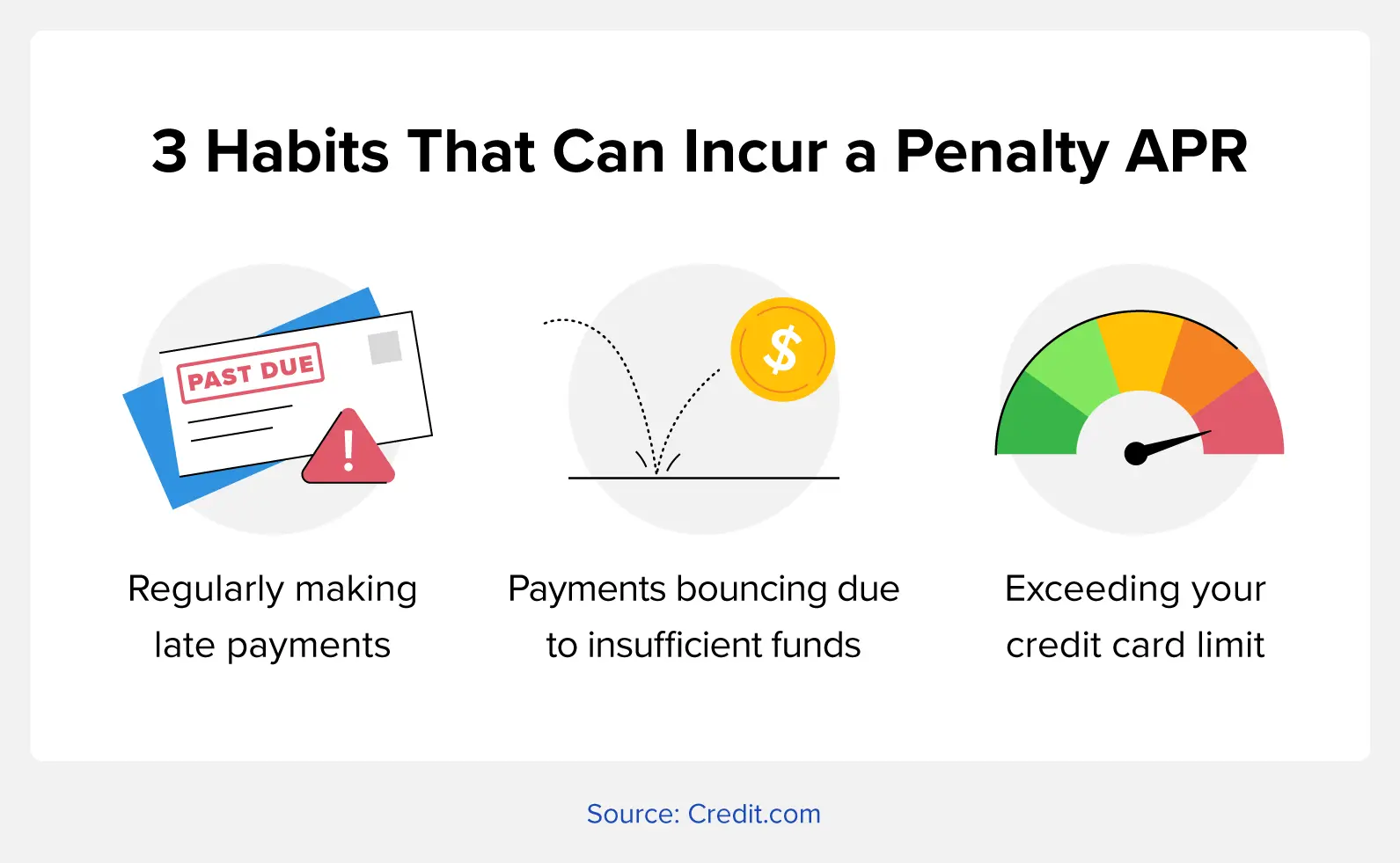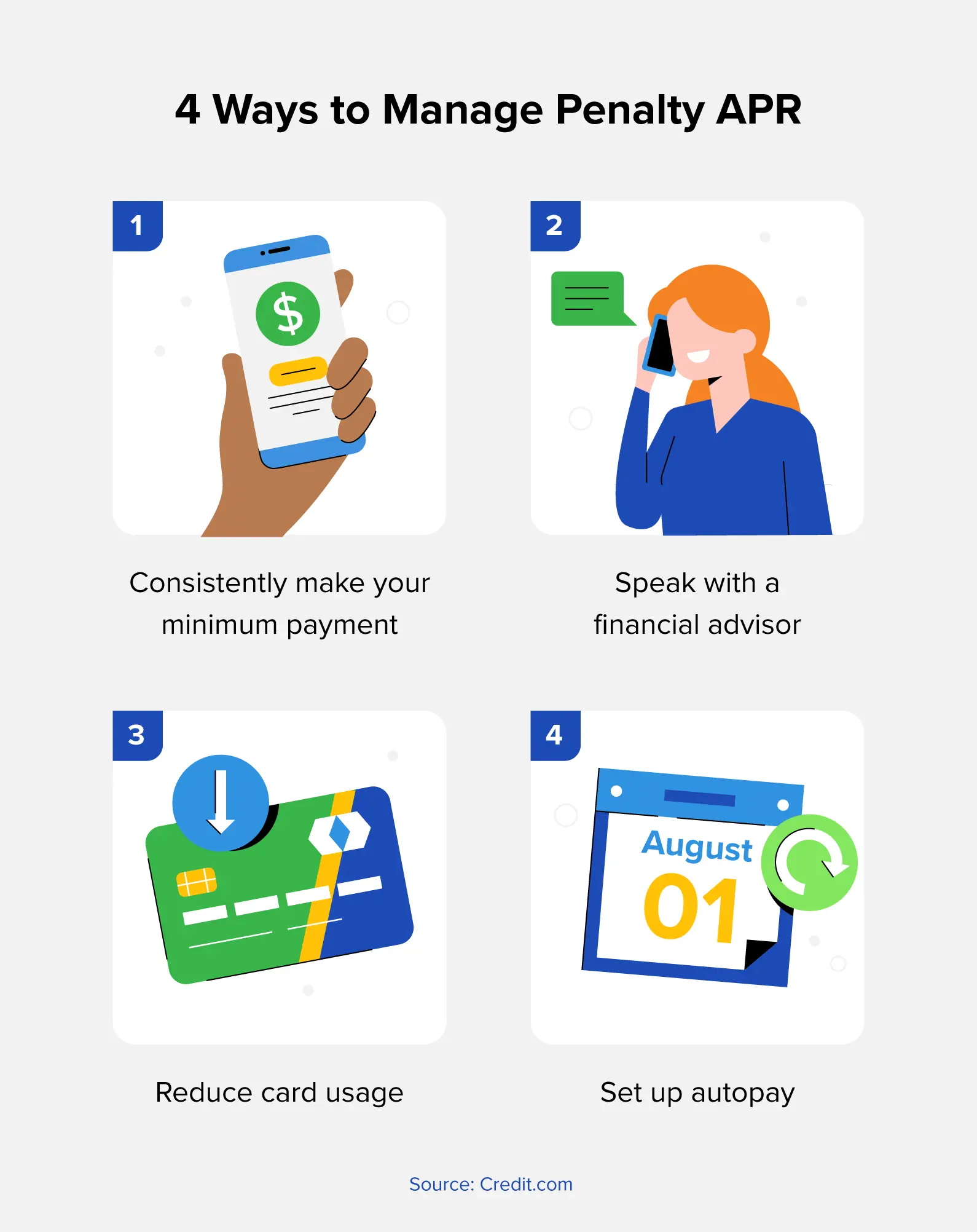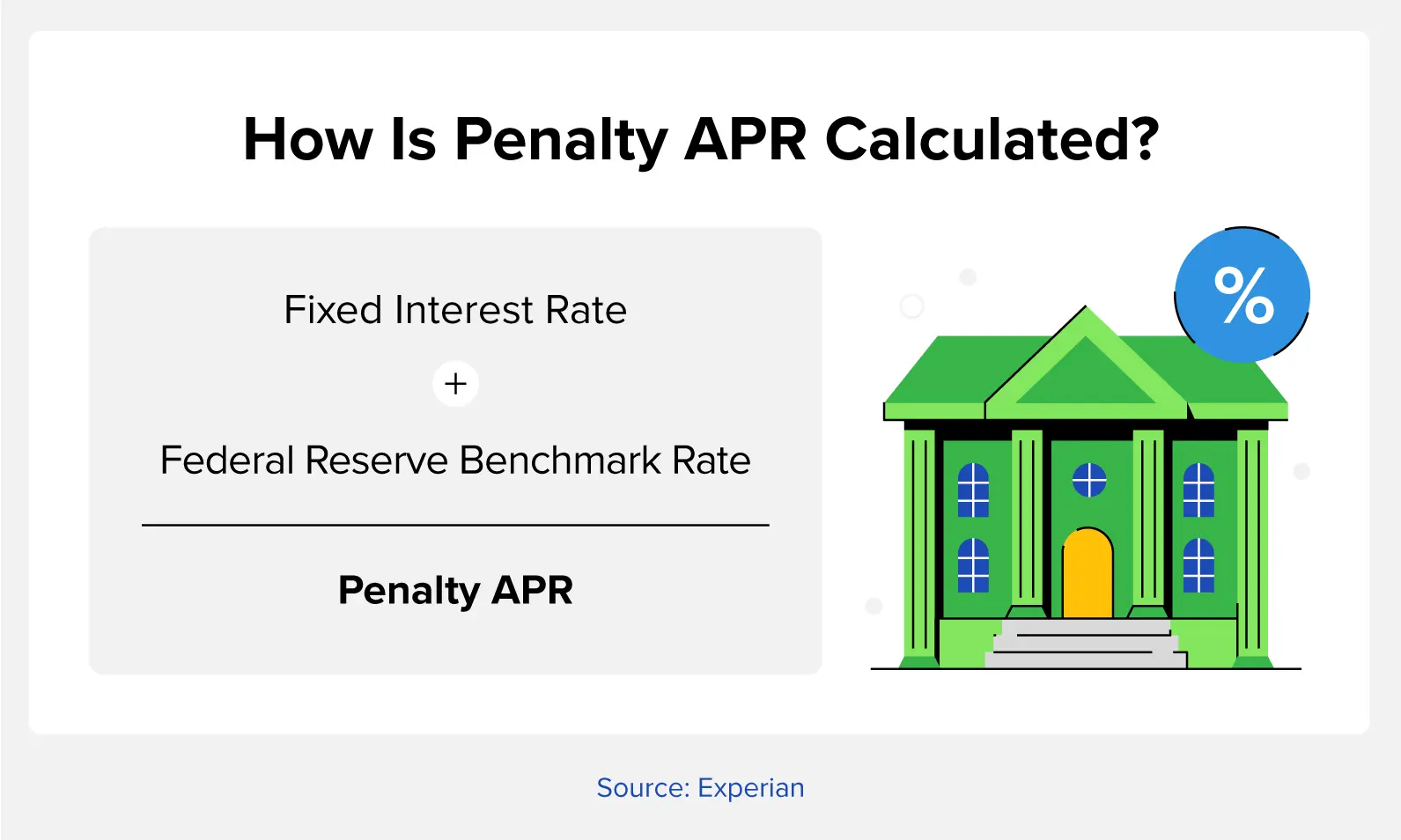
A penalty annual percentage rate (APR) is a heightened interest rate that can be issued if a person doesn’t use their credit card according to the card agreement. Card issuers explain the exact criteria that can lead to a penalty APR in multiple ways, like the terms and conditions section of a credit card application and in cardholder agreement documents.
Here, we’ll share how you can avoid a penalty APR and tips to help you manage.
A CD rate refers to the interest someone can earn on a certificate of deposit over time.
Key Takeaways:
- Banks provide the criteria for issuing penalty APRs in their cardholder agreement documents.
- APRs only apply to a card’s balance at the end of a statement period.
- Most penalty APRs last for a minimum of six months.
How Penalty APR Works

Bad credit card habits, such as routinely neglecting a minimum payment, can result in a penalty interest rate. Penalty APR usually maxes out at 29.99 percent, which can still be manageable with the proper know-how.
Let’s say you have a 29.99% penalty APR and a statement balance of $500 on your card. To figure out how much interest you’d have to pay, divide 29.99 by 12 (representing each month of the year). You would get 2.499, which you can then divide by 100 to get 0.02499. Multiply your $500 balance by 0.02499, and you would owe $12.49 in interest for the month.
Some issuers base things on a daily periodic rate, so you’d divide the APR by 365 instead of 12, then follow the remaining steps.
How to Avoid Paying the Penalty Rate
Remember that you only have to pay interest on a card if you have an outstanding balance by the end of the statement period. If you manage to completely pay off your balance, your 29.99% penalty APR won’t generate any interest.
How Long Will a Penalty Rate Last?
According to the Consumer Financial Protection Bureau, credit card issuers must reconsider a cardholder’s penalty interest rates after six months. So, as long as you make the minimum payment amount six consecutive times, your interest rate will likely return to normal on existing balances.
These rules apply to consumer credit cards, not those issued to small businesses. With a small business card, several infractions can lead to a penalty interest rate. These can include missing a single payment, spending over the credit limit, or having payment returned for insufficient funds.
Business credit cards are largely exempted from the CARD Act, so each issuer may have different rules about how and when cardholders may have their penalty interest rates cleared. Small business credit cardholders facing penalty interest rates should contact their card issuer for more information.
Steps to Take If You’re Paying Penalty APR

While it may be disheartening to receive a penalty APR, it’s entirely possible to manage this change. Here are several actionable steps you can take when you’re dealing with a penalty APR:
- Make your minimum payments: Consistently making your minimum payments will keep your credit score from dropping and display financial responsibility to your card lender.
- Limit your credit card usage: Only use your credit card for essentials when managing a penalty APR. If your penalized card is linked to any subscriptions, consider canceling them for now.
- Use autopay: Use autopay to ensure that you don’t accidentally miss your minimum payments.
- Meet with a financial advisor: Financial advisors can offer tailor-made personal finance advice to help you with your unique circumstances.
Do All Credit Cards Have a Penalty APR?
While there’s no such thing as a good credit penalty APR, some cards have much more manageable interest rates than others. Moreover, some cards never impose higher rates on delinquent cardholders.
Examples of cards without a penalty interest rate include the PenFed Promise, the Discover it®, and the Citi Simplicity®. There are no annual fees for these cards. On the other hand, the PenFed Promise and Citi Simplicity® have no . However, Discover it® does have a competitive cashback program.
Does Penalty APR Affect Credit Score?

A penalty APR won’t affect your credit score in and of itself. However, payment history makes up the largest portion of your credit scores, so the fact that you’ve missed multiple payment dates could significantly decrease your credit standing.
Exceeding your credit limit can incur a penalty APR and increase your credit utilization ratio—which compares your current account balances with your total credit limit. Professionals urge cardholders to stay below a 30% utilization rate, which would be $300 out of a $1,000 credit limit.
Learn More About Personal Finance at Credit.com
Penalty APRs are just one aspect of credit card usage and personal finance management that consumers should know about. Visit Credit.com today to learn more about other financial topics that may be relevant to you, now or in the future.
You Might Also Like
June 14, 2023
Credit 101
January 25, 2022
Credit 101
February 19, 2021
Credit 101





